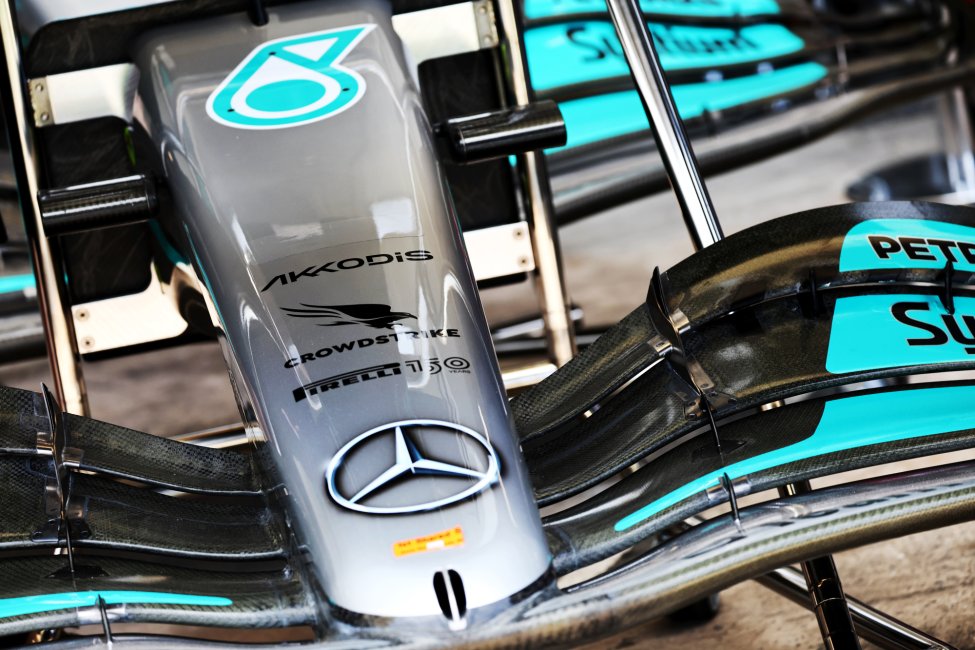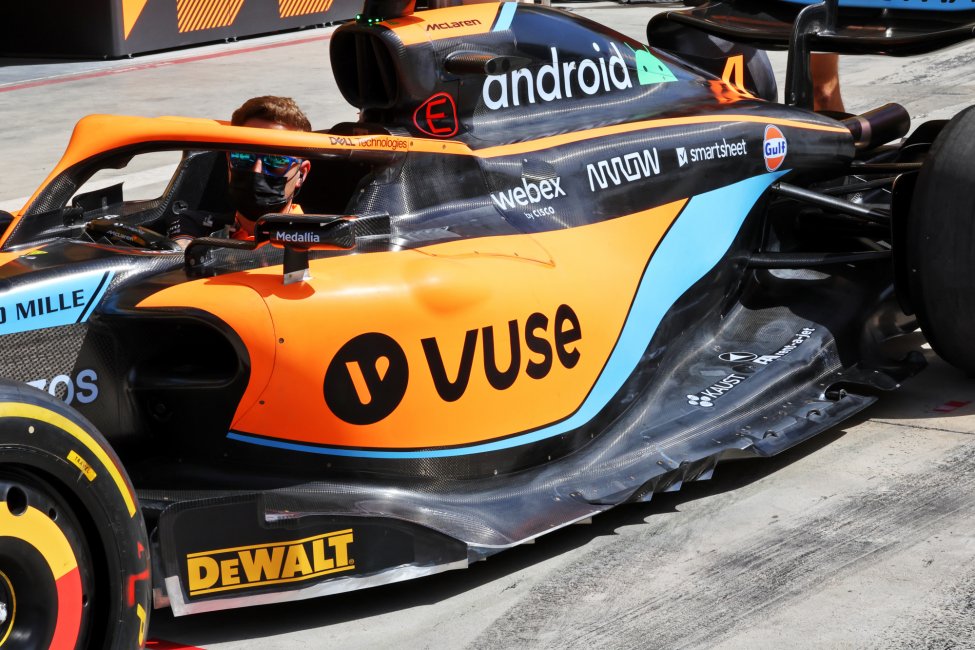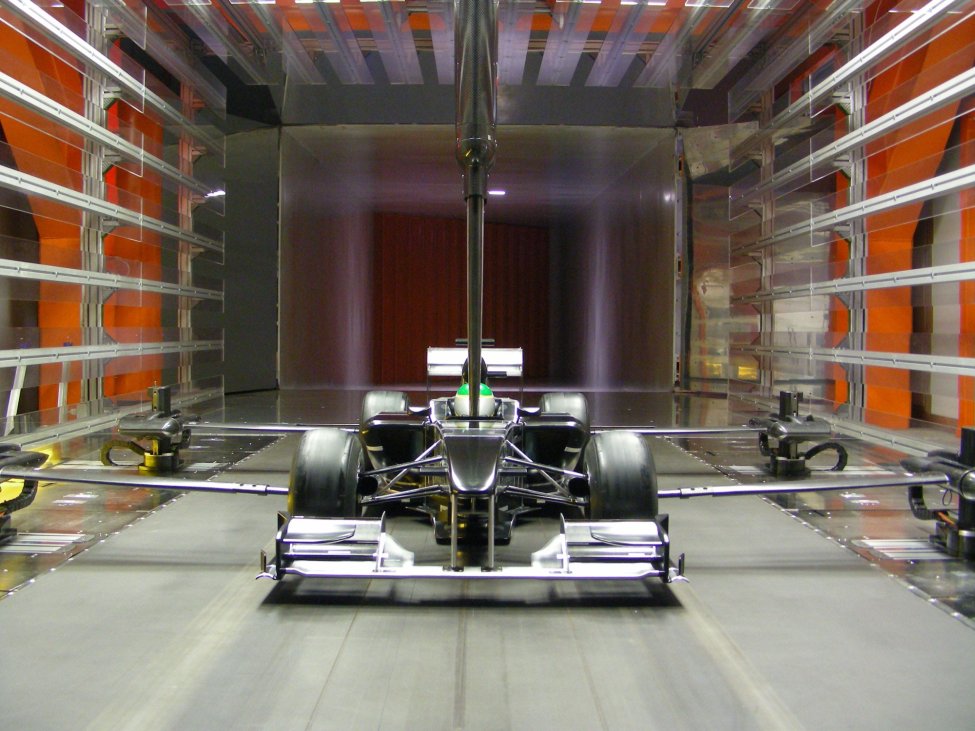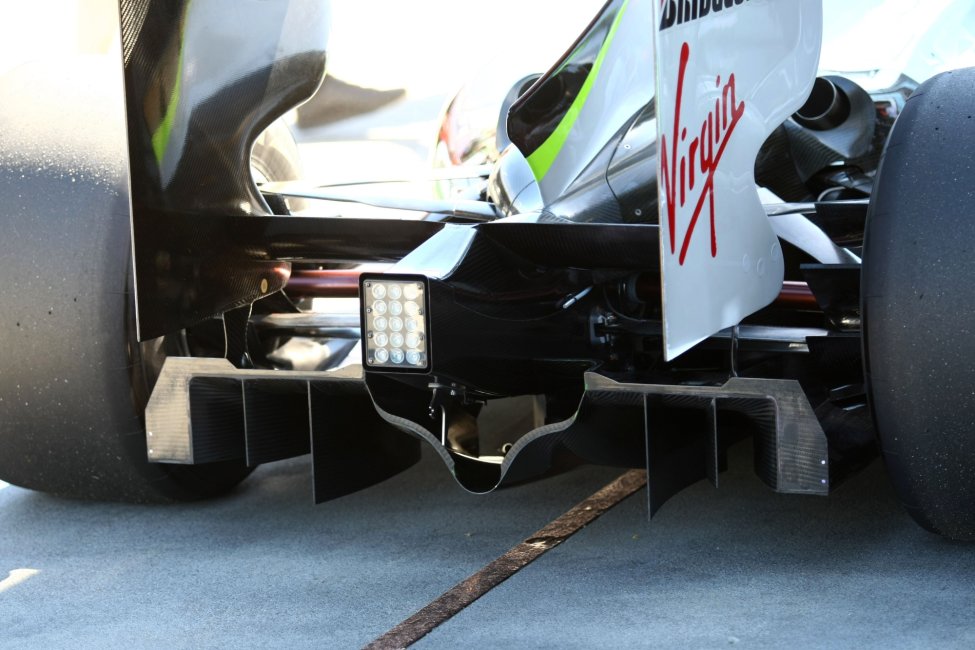Aerodynamics F1
Aerodynamics contribute to the design of an F1 car to reduce drag and generate downforce, which helps the car stick to the road better and go faster through corners. On this page, we take you through the most important aspects of a Formula 1 car's aerodynamics.
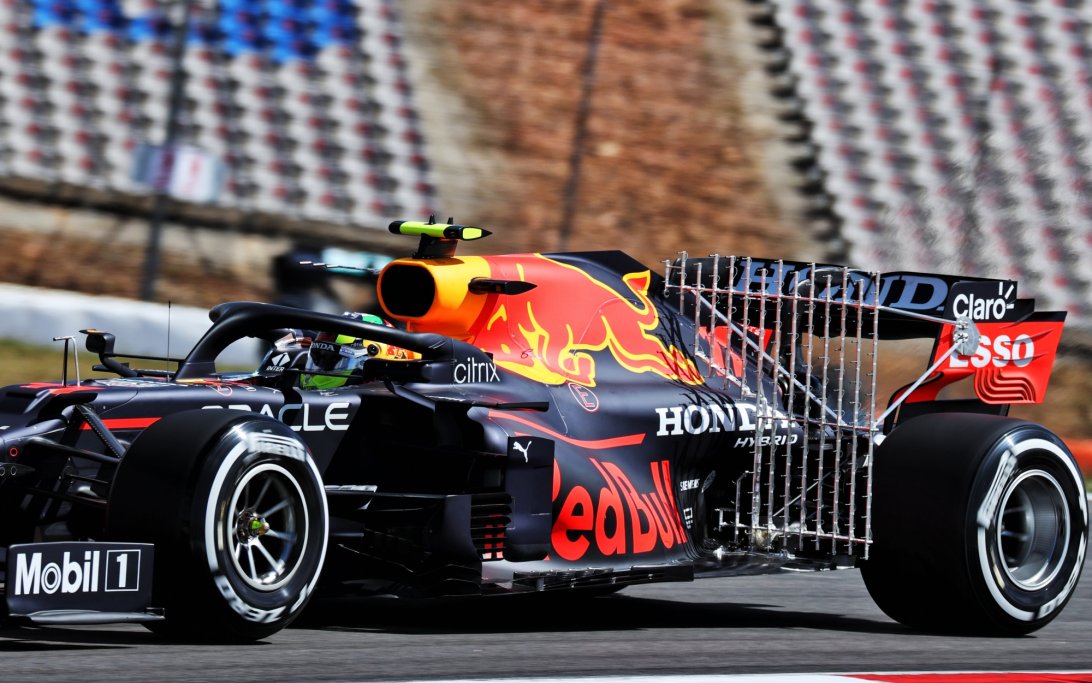
Downforce: better grip on the asphalt
The downforce of a Formula 1 car is responsible for much of its on-track performance. It refers to the aerodynamic force that pushes the car down and provides more grip on the track. This allows the car to go faster through corners and accelerate on the straights. The trick for teams is to balance the downforce as optimally as possible so that the car remains both stable and fast. This is done through different parts of the car, such as the front and rear wings, diffuser and base plate. Downforce is therefore an important aspect of the development and tuning of a Formula 1 car and can make the difference between winning and losing on track.
Front wing and rear wing
The front and rear wings of an F1 car are essential for generating downforce. The front wing is responsible for guiding air to the rest of the car and the rear wing is responsible for creating downforce. Both wings are designed to create optimal airflow to generate downforce.
Wing end plate
The wing end plate of a Formula 1 car is an important part of aerodynamics and plays a crucial role in the car's performance. Located at the end of the front and rear wings, this 'plate' helps create downforce and stability during high-speed driving. The wing end plate is designed to direct airflow around the wings and reduce turbulence, improving the car's grip and traction. It also acts as an important part of the transition area between the wing and the rest of the car, promoting streamlined and efficient airflow.
By using advanced materials and design techniques, wing end plates ensure that the Formula 1 car generates maximum downforce and delivers optimal performance on the track. For teams, optimising the wing end plate is a constant process of research and development to gain a competitive advantage in races.
Porpoising F1
Porpoising is the phenomenon where the front of the car moves up and down at high speeds. This is a challenge for the car's aerodynamics because it disrupts airflow and reduces downforce. Teams try to reduce porpoising by adjusting the position of the front and rear wings and optimising the car's streamline. Especially during the 2022 season, several teams suffered from this. Read more about porpoising here.
F1 aero rake: measuring aerodynamics
An aero rake is a set of tubes attached to the rear of the car to measure airflow. It looks like a kind of fencing. An aero rake gives teams insight into the car's aerodynamics and helps them optimise downforce and drag. Teams continuously adjust their cars based on the measurement results of the aero rake.
Flow-vis on a Formula 1 car
Flow-vis is a technique often used to improve the aerodynamics of a Formula 1 car. It is a special paint applied to different parts of the car to visualise airflow. The paint's colour changes allow engineers to see how the airflow moves along the car and where turbulence or drag might be created. This allows teams to optimise their design and improve the car's performance. By applying flow-vis, teams can reduce drag, increase downforce and improve the car's speed.
The floor of an F1 car
The floor of a Formula 1 car is one of the most important components for aerodynamics and on-track performance. The floor is designed to generate downforce and optimise airflow under the car. In this page, we take a closer look at the functions of an F1 car's floor and how it is designed.
The floor of an F1 car has many functions. Its main purpose is to generate downforce and improve grip. The floor acts like an inverted wing, creating a pressure difference between the top and bottom of the car. This pressure difference creates downforce, allowing the car to stay better on the track and drive faster through corners. The floor of an F1 car must also comply with FIA regulations, which determine how big the floor can be and where it should be located under the car.
F1 wind tunnel: the key to aerodynamic design
The wind tunnel is an indispensable tool for Formula 1 teams when designing and testing their cars. It is a laboratory facility in which airflows are simulated to investigate the aerodynamic properties of objects. The wind tunnel in Formula 1 is instrumental in improving lap times.
Open and closed wind tunnel
Each Formula 1 team has its own wind tunnel or uses a shared facility. There are two types of wind tunnel: open and closed. In an open wind tunnel, the test object is in a large open space through which air flows. A closed wind tunnel is used with a scale model in a smaller measurement room. This type of tunnel is ideal for testing aircraft and missile components that travel through the air at high speeds.
What is an F1 wind tunnel?
In Formula 1, the wind tunnel is used to study how air currents affect the car's performance. The object being tested is a scale model of the race car that is allowed to be no more than 60% of the size of an original F1 car. Huge propellers are then used to blow air straight from the front onto the car and map the effects of air currents.
In short, the wind tunnel is an indispensable tool for Formula 1 teams to optimise the performance of their cars. By examining the car's aerodynamics, teams can reduce drag and increase downforce.
How much does an F1 car weigh?
Formula 1 teams must take into account a so-called minimum weight when developing a car. This is for the safety of the drivers. The weight of almost eight hundred kilos makes the current generation of F1 cars the heaviest ever. But what exactly is this about?
Weight of an F1 car
A Formula 1 car should weigh a minimum of 796 kilograms. This includes driver and dry weather tyres. Fuel is not included in this. Also in 2022, F1 cars weighed 796 kilograms. The FIA wanted to reduce this weight in 2023, but due to the arrival of the new, heavier Pirelli tyres, they are keeping the minimum weight of 796 kilograms in 2023 as well.
How much does an F1 car weigh with fuel?
The tank of a Formula 1 car has room for about 110 kilograms of fuel. When a car is filled up, the total weight of the car at the start of a race is around 906 kilograms.
Weight saving F1
Sometimes teams struggle to stay close to the minimum weight. For instance, Max Verstappen's RB18 (2022) was struggling with considerable excess weight. To save the excess weight, teams sometimes decide to remove stickers and paint from the car. In addition, some drivers occasionally drive with less/no drinks on board to reduce weight.
What do the parts of an F1 car weigh?
Whereas in the earlier years of the sport it was mainly the chassis that provided the required kilos, today there are a lot of other parts that bring a Formula 1 car to a minimum weight of 796 kilograms. The table below tells you how much a large number of parts of an F1 car weigh.
| Part | Weight |
|---|---|
| Steering wheel | About 1,3 kilograms |
| HALO | 7 kilograms |
| Front wing | About 10 kilograms |
| Gearbox | About 40 kilograms |
| Fuel | Maximum 110 kilograms |
| Power Unit | Maximum 150 kilograms |
| Chassis | No fixed/minimum weight |
The difference in weight over the years
In 2008, Formula 1 cars weighed less than 600 kilograms. That is some 200 kilograms less(!) than in 2023. This is partly because the cars have become bigger, V6 engines are heavier than V8 engines, the HALO has been added and more. Want to know what a Formula 1 car weighed over the years? Click here.
How long is a Formula 1 car?
There are no rules for a minimum or maximum length of a Formula 1 car. However, there is a maximum distance of 1,225 millimetres between the wheels and the front and rear wings.
How wide is a Formula 1 car?
Each F1 car has a maximum width of 200 centimetres (2 metres). One measures the distance from the side of the wheels. When measuring, the wheels must be completely straight.
How high is an F1 car?
The height of a Formula 1 car is measured from the bottom plate. An F1 car is about 95 centimetres high.
Diffuser F1
The diffuser of a Formula 1 car is an important aerodynamic component that ensures optimal downward pressure on the car. It is placed at the rear of the car and aims to accelerate and widen the airflow passing under the car, creating a vacuum and pressing the car more firmly to the ground. This is essential for better grip and stability at high speeds and in corners.
What is an F1 diffuser?
The diffuser is often made of carbon fibre and has a complex shape with different layers and angles. The design is based on FIA regulations, but teams always try to find creative ways to optimise the diffuser within these rules. For example, they can change the shape of the diffuser, use different materials and even create small openings to improve airflow.
Diffuser design can make a big difference in the performance of a Formula 1 car. Teams spend a lot of time and money finding the best shape and material to maximise downforce and minimise drag. Fact: about 50% of a Formula 1's downforce is created using the aerodynamics under the car. Most of this comes from the floor and diffuser. The diffuser is therefore an important part of Formula 1's constant quest for more speed and better performance.
Double diffuser F1
In 2009, the Brawn GP team introduced a new, innovative variant of the diffuser: the double diffuser. This greatly improved the car's downforce and was a key factor in the team's success.
The double diffuser helped accelerate and then increase the airflow under the car. This created increased downforce, which helped the car stay on the track better and go faster through corners. It was an ingenious system that enabled Brawn GP to outperform competitors and win the championship.
Brawn GP's double diffuser design was so successful that other teams quickly followed suit. The double diffuser was banned by the FIA with effect from the 2010 Formula 1 season.
Blown diffuser F1
The blown diffuser is a much-discussed piece of technology in Formula 1. It is a system where the engine exhaust gases are used to influence the airflow under the car to generate more downforce.
The idea behind the blown diffuser is to direct the exhaust gases in a specific direction, accelerating the airflow under the car and generating more downforce.
It was mainly Red Bull Racing that was known for its use of the blown diffuser and achieved great success with it. In 2011, the blown diffuser was banned by the FIA, but many teams still tried to find ways to use this system.
Differential F1
The differential - also called diff - is responsible for distributing power between the wheels, keeping the car stable and making it easier to drive through corners. The differential works by measuring the speed of the inner and outer wheels and adjusting the torque distribution to prevent the wheels from skidding or slipping.
What is a differential F1?
The differential is a crucial part of the chassis of a Formula 1 car, as it forms the basis of the rear suspension and transfers forces from the engine to the rear wheels. The differential is finely tuned by engineers to optimise the car's performance and minimise tyre wear.
Types of differentials in Formula 1
The different types of differentials used in Formula 1 are the open differential, the limited slip differential and the limited slip differential. The open differential is the most common type of differential and distributes power evenly between the wheels. The limited-slip differential keeps the wheels from slipping, while the limited-slip differential can lock torque distribution and direct power to the wheel with the most grip.
Less tyre degradation
The differential is thus an important part of a Formula 1 car's rear suspension, ensuring optimal power distribution between the wheels. Its precise adjustment by engineers allows the car to drive more efficiently through corners and minimise tyre degradation.
